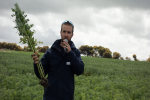Author: Grains
65 results found:-

Legume product landscape shifts
Author: Jaimee Hughes, Nutrition manager, Grains & Legumes Nutrition Council, 2022-01-14T09:00:00+11:00Legume products are increasingly recognised as sustainable foods with environmental, nutritional and economic benefits. Research findings by Grains & Legumes Nutrition Council suggest plant-based diets rich in legumes could help optimise human and planetary health.
-

Asian biscuit demand presents new opportunity
Author: Dr Siem Siah, senior grains research scientist, Australian Export Grains Innovation Centre, 2022-01-12T09:00:00+11:00The popularity of baked products such as biscuits and cakes is growing across South-East Asia and China as incomes grow and diets change. Australian Export Grains Innovation Centre (AEGIC) analysis identified that the annual growth rate for cakes and biscuits is twice that of noodles in South-East Asia.
-

Wholegrain oats and barley offer dietary promise
Author: Grains & Legumes Nutrition Council, 2021-10-21T09:00:00+11:00New research by accredited practising dietitians from the Grains & Legumes Nutrition Council published in the international journal Nutrients has shone a light on the use of oats and barley in the local and global markets and on-pack cholesterol-lowering health claims.
-

Prevention is better than cure
Author: Kym McIntyre, Queensland Department of Agriculture and Fisheries grains biosecurity officer, 2021-10-18T09:00:00+11:00Early detection and prevention are key components of a biosecurity plan that is designed to reduce the likelihood and impact of devastating pests, diseases and weeds entering farms. The Invasive Plants and Animals Policy Framework identifies the four key aspects of the Victorian Government’s overall approach to managing the different stages of an invasive species.
-

Pantry Blitz a biosecurity success for WA grains industry
Author: Jeff Russell, WA DIPRD grains biosecurity officer, 2021-10-17T09:00:00+11:00Demonstrating the absence of exotic pests is vital to continue growing the local grain industry and maintaining access to export markets. The latest ‘Pantry Blitz’, an annual biosecurity surveillance project that focuses on various invasive stored product pests, has revealed no new exotic pests this year.
-

Eradication of red witchweed on track
Author: Kym McIntyre, Queensland grains biosecurity officer, 2021-09-05T09:00:00+10:00Early detection, a comprehensive surveillance and eradication program, and willingness to experiment with new technologies means the red witchweed eradication program is on track to eradicate this invasive plant from the only known infestation in Australia, near Mackay in Queensland.
-

Switching to wholegrains offers healthcare savings
Author: Alex Locke, Marketing and communications manager, Grains and Legumes Nutrition Council, 2021-09-04T09:00:00+10:00New research findings published in the international journal Nutrients in June have shown that simply swapping refined grain foods for wholegrain alternatives could provide healthcare savings in Australia of more than $1.4 billion annually.
-

Exotic pest a ‘miner’ issue for the grains industry?
Author: Kym McIntyre, Bill Gordon, Grains Farm Biosecurity Officers, 2021-07-25T09:00:00+10:00Serpentine leafminers are a serious threat to crops that rely on the visual appearance of their foliage for market acceptance and can significantly impact yields for crops like potatoes, but are they a threat to grain crops?
-

Proving the benefits of an age-old fermentation practice
Author: Olivia Downie, student dietitian, Grains & Legumes Nutrition Council, 2021-06-10T09:00:00+10:00Fermentation is the ancient practice of adding microbial organisms to raw materials, and was originally used as a preserving method. It has become a common technique used to change the form, taste and texture of many foods into products we know and love today, including sourdough bread.
-

What happens when an exotic pest arrives in Australia?
Author: Bill Gordon, NSW grains biosecurity officer, 2021-05-28T09:00:00+10:00When a new pest or disease is first detected in Australia, a decision must be made on whether it is feasible to eradicate it or whether we need to learn how to manage it. A recent example of an exotic pest that was determined unfeasible to be eradicated was fall armyworm, which arrived in northern Australia in early 2020.























































